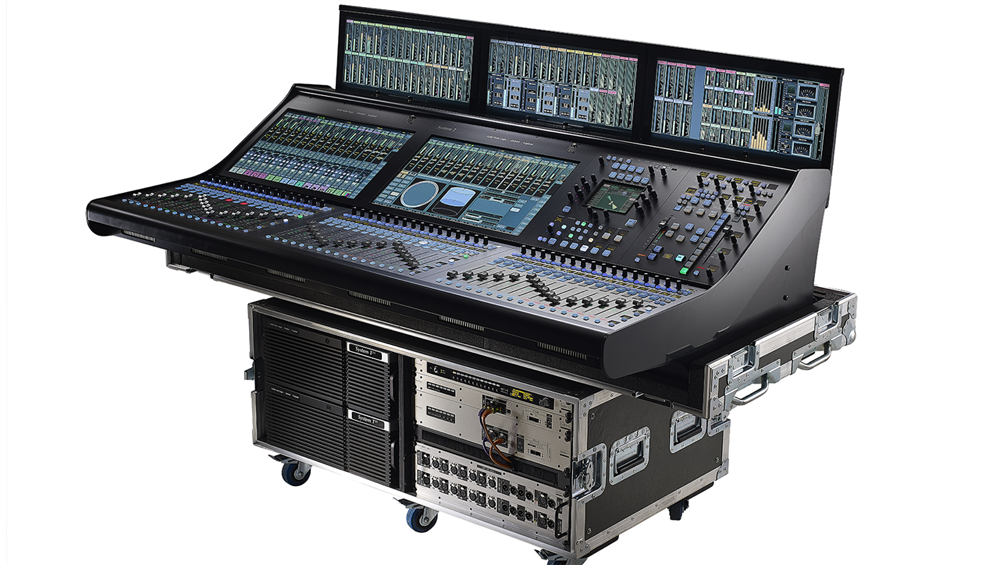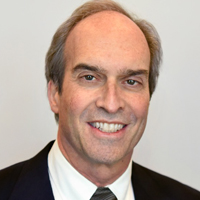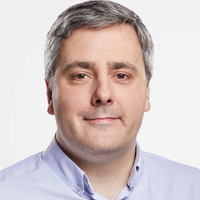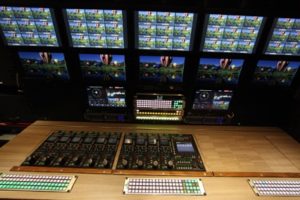
TVN Tech | Audio Over IP Transition Is Humming Along

Manufacturers of audio equipment for television broadcasters are seeing a growing adoption of audio-over-IP networking technology, aided by the industry’s broader shift to IP routing infrastructures based on the SMPTE ST 2110 suite of standards.
While different manufacturer-driven audio networking protocols like Dante, Livewire and WheatNet-IP have been used for years, the inclusion of the 2110-30 audio transport standard in ST 2110 should help ensure interoperability across a wide range of different vendors’ products and enable more flexible, cost-effective production workflows.
Transporting audio over IP (AoIP) networks certainly isn’t new. The radio industry has been using AoIP routing for over a decade and the AES-67 technical standard for audio transport was published back in 2013; ST 2110-30 is actually a specialized subset of the broader AES-67 standard that is “constrained” for professional use.
But the rate of AoIP adoption across the television broadcast industry has been somewhat slow, say audio vendors, and driven mostly by the video side of plants as broadcasters move from HD-SDI routing to ST 2110 architectures.

Telos Alliance’s John Schur
“They’re not thinking of audio over IP in isolation,” says John Schur, president of the TV Solutions Group for audio conglomerate Telos Alliance. “They’re going IP, or they’re not. It’s video and audio — that seems to be the way they think about it.”
Scale Implementations Limited
Telos subsidiary Axia Audio first introduced its Livewire audio networking protocol back in 2003. It was adopted by a number of radio stations, and the company subsequently updated it for compatibility with the AES-67 and Ravenna standards.
Telos’ Linear Acoustic division was an early supplier of AoIP monitoring and processing products for the TV market, and Telos also makes IP-based intercom systems as well as audio consoles. But to date, Telos has seen AoIP equipment mostly adopted in small parts of TV broadcast facilities instead of across comprehensive systems.
“There are only a handful of broadcasters actually implementing audio-over-IP on any kind of scale,” Schur says.

Calrec’s Henry Goodman
Those facilities are generally “greenfield” sites that are doing facility-wide IP implementations for both video and audio, he says, not retrofits of existing HD-SDI facilities.
“There are a lot more folks doing islands of IP,” Schur says. “They might have SDI and MADI in different areas of the plant, but as some point it gets converted to AES-67 over IP. It may be routing, or some processing.”
Henry Goodman, director of product development for audio console vendor Calrec, agrees that video, not audio, is the main driver for IP conversions with broadcasters looking to prepare for “data hungry” formats like UHD. But he does see some audio-only IP installations as well.
“We see a lot of customers using the audio side to get their feet in the water in terms of IP,” Goodman says. “It’s less daunting for them than a total commitment.”
He adds that doing installations on the audio side with gateways is relatively easy. It gives broadcasters experience on IP networks, in stream management and in how to deal with timing and PTP (precision time protocol) with little impact on their infrastructure, Goodman says.
The leading supplier of audio consoles to the U.S. call-letter TV station market today is Wheatstone, which counts Sinclair Broadcast Group and Hearst Television as customers. The company initially created its own AoIP networking protocol, WheatNet-IP, more than 12 years ago to bring AoIP to the radio industry. It is still using it today in its broadcast TV products.

Wheatstone’s Phil Owens
Wheatstone experienced rapid growth for AoIP in radio in the mid-2000s as relaxed media ownership rules spurred a wave of radio station acquisitions and the formation of local “clusters” with seven or eight stations and a total of 20 to 30 studios operating under one roof. Such clusters were the “perfect scenario” for audio to be distributed via IP, says Phil Owens, Wheatstone senior sales engineer.
“It was like flipping a switch,” Owens says. “It was amazing how rapid that transition was to IP.”
A ‘Mixed Bag’ Adoption
The model is far different in television, with most stations having only one audio control room, notes Owens (though TV duopolies with two control rooms are becoming more common). So the impetus for broadcasters to adopt AoIP has been a “mixed bag” of greenfield sites that are installing IP networking for everything and legacy plants that are sticking with an HD-SDI infrastructure for video for now but need to replace aging audio equipment.
In some cases those are analog Wheatstone mixing consoles that are 20 to 25 years old.
Wheatstone still sells traditional audio router systems that use TDM (time-division multiplexing) technology, and supports them with parts. But Owens says the company hasn’t done product development in that area for some time, and customers are generally looking to buy fresh technology.
“If somebody is doing a standalone audio upgrade, and all they’re doing is changing out that audio board and the audio routing, chances are they’re going to go with an IP system regardless of what they’re doing with video,” Owens says. “The switch to IP on the video side is a much heavier lift. Guys aren’t going to be abandoning SDI systems left and right, that’s such a huge part of their infrastructure.”
Another driver for IP audio sales are stations adopting automated production control systems like Grass Valley Ignite, Ross OverDrive or Sony ELC to produce their newscasts with fewer personnel. Those software-based systems need a digital audio console with an API (application program interface) to communicate with them.
“The older analog boards just don’t support that,” Owens says.
Varying Console Sizes
While the consoles Wheatstone sells are “all over the map” in size, Owens says, in general, systems are getting smaller with the move to IP. Analog boards were fixed in size, with a predetermined number of inputs and a discreet input module required for every possible source.
“The number of sources determined the size console you needed to buy, but that’s just not the console architecture these days,” Owens says. “You can assign any source to any input on the board, and you can save configurations for show presets and create different presets.”
Owens notes users can make the console much more compact, as they don’t need an input module “for everything you could think of using on-air.”
The relative size of console a station needs still depends on what kind of local content it produces. Large stations doing a lot of remotes from multiple news trucks will generally need a larger console than a smaller station with one truck, simply because of the number of mix-minuses involved.
But in some cases customers don’t need a physical control surface at all, as many stations are virtualizing audio functions and/or using production automation systems to control the audio.
“We’ve been doing a lot of work in the whole virtual realm,” Owens says. “You still need to mix the audio, switch it and process it, but that’s all happening in the router. In terms of the actual board with faders for the operator, you don’t need that, as [Grass Valley] Ignite is doing that for you.”
Lawo first established itself in audio consoles but has quickly expanded into video in recent years on the basis of its IP networking expertise. The German vendor, which is the driving force behind the Ravenna open-standard networking protocol, makes IP audio consoles and associated interfaces as well as routing control software for video and audio that competes with the likes of Imagine, Grass Valley and Evertz.
Lawo sees three clear segments for the AoIP market, says its Chief Technical Officer Philip Myers:
- Brand new greenfield sites like the CBC/Radio-Canada’s new broadcast center in Montreal, which is using Lawo’s Virtual Studio Manager control software and IP audio consoles.
- High-end sports production trucks, like two 53-foot expando units for Game Creek Video, which Lawo outfitted with IP-based audio and video IP routing.
- Remote production flypacks, which are serving as commentary units for broadcasters doing REMI (remote integration) productions.

Lawo’s Philip Myers
For “supertrucks” that are designed to support large-scale HD and UHD productions with requirements for mono, stereo, Dolby 5.1 and Atmos audio, IP routing is an enabling technology, Myers says.
“With the amount of different audio and video signals, if you tried to build it on MADI and SDI you wouldn’t be able to put enough copper in the truck,” he says. “You would run into physical constraints.”
A Volume Player
The biggest supplier of AoIP technology on a sheer volume basis is probably Australian firm Audinate, the supplier of the popular Dante networking software. The Dante “technology stack” has been licensed by some 430 companies and is used in 2,100 active products, says Brad Price, senior product marketing manager for Audinate.
Dante is in heavy use at major broadcasters like NBC and the BBC as well as a number of major sports venues.
“We see people using Dante for the same reason that IP is good for everything,” Price says. “It’s fabulous for scale, and it’s all manageable from a simple software interface.”
Since Audinate licenses Dante on a device basis, the opportunities in a market like live sound, where Dante made its initial mark, are far greater than in television. Broadcast TV represents only around 10% of Audinate’s sales, Price says, though he sees it as a big growth opportunity.
Dante works with AES-67 and has added support for ST 2110 in the latest version of its Dante Domain Manager software.
Calrec has developed its own AoIP networking system, Hydra2, and also licenses Dante for use in its consoles. Calrec has done particularly well in the sports production market in recent years, both for new mobile truck builds and with broadcasters looking to do REMI productions.
Another Dante adopter is rival console maker Solid State Logic (SSL), which began developing its IP consoles five years ago. It started shipping its System T IP-native line four year ago, and no longer makes conventional audio consoles that use TDM (time-division multiplexing) technology.
“When we started building a new broadcast console, we went down the road of no MADI or TDM router, we would do it all on the IP network,” says Tom Knowles, product manager, broadcast systems for SSL.
SSL has already sold “hundreds” of IP consoles that use Dante Domain Manager software to configure their audio networks, Knowles says. The company also makes network interface and processing products, and Knowles estimates that 50% of broadcast customers are using AoIP in some capacity. Big AoIP installations include SportsNet NY, BBC Wales and Canal Plus in Paris. Immediate benefits of AoIP include faster setup, less cabling and easy scalability.

SSL’s Tom Knowles
“The important thing for the station level is resource sharing,” Knowles says. “In a facility where you have multiple studios, before you would put in a centralized MADI router to share audio among them. With IP you get resource sharing built into the system, which allows you to share resources across different rooms and buildings.”
Protocols Vs. Standards
A unique aspect of AoIP is the number of established, manufacturer-driven protocols. Owens explains that’s because AES-67 itself is rather limited.
“Whether it’s Calrec, Lawo or Wheatstone, none of us could build a completely functional system using AES-67 alone,” Owens says. “It doesn’t do software logic control or GPI [general purpose interface] control. It doesn’t do discovery, which lets a device announce itself to the system. Those are the things that are really required, which you need to be able to do more than just send audio from one place to another.”
Some of those requirements are supposed to be addressed by the Advanced Media Workflow Association’s NMOS (Networked Media Open Specifications) protocol for communicating with and controlling remote equipment. NMOS, which allows two devices to automatically discover and communicate with each other across an IP network, is expected to greatly streamline setting up ST 2110 broadcast infrastructures.
The key specs for AoIP include IS-04, which handles device discovery and registration; IS-05, which covers connection management; and IS-08, which allows for the selection of audio channels from a stream.
But Knowles says that NMOS, which is still in the development stage with many vendors, covers some functions that are already handled automatically by Dante and doesn’t address others. So he doesn’t see Dante or other manufacturer-driven protocols going away.
Wheatstone’s Owens says that NMOS should “solve some of the limitations of AES-67” and make AoIP easier, such as eliminating the need to manually enter separate IP addresses for every multicast audio stream. He says Wheatstone has been doing “a lot of work” with NMOS development.
While in the early days of AoIP in radio, customers could adopt isolated “islands” of IP supported by a single vendor through gateways, a broader adoption of AoIP requires open standards, Lawo’s Myers says. That’s why Lawo launched Ravenna (created by subsidiary ALC NetworX), which supports AES-67, to help drive interoperability.

Lawo provided IP audio and video routing systems for Game Creek Video’s latest mobile units.
“We see a really large uptake of AES-67 devices,” Myers says. “The reality in the past was that audio production and radio were always separate islands to the TV business. But they are now converged.”
Myers says the customers Lawo sees embracing IP no longer think of audio production and radio as islands, but as a connected world of networks prompting interoperability to become an important factor. “A lot of customers are taking products from all areas.”
Lawo also supports ST 2110-30, which Myers says could very well become the “line in the sand” as the interoperability point for TV audio infrastructure. But he notes that 2110-30 uses a different version of PTP, PTP-2, than Dante, which to date has used PTP-1. So he expects that for the near term “we’re going to have a mixed environment of Dante and 2110.” He also says that NMOS has some limitations in managing large-scale systems.
“[For] most customers, the control layer is their workflow, and that tends to become specific to individual customers,” Myers says. “That’s hard to standardize and make generic.”
Telos Alliance’s Schur expects traction for AoIP to improve in the next two to three years as the broader adoption of ST 2110 continues. While AES-67 has generally been the common ground for different vendors’ devices to find interoperability, he says the focus has definitely shifted to supporting ST 2110-30.
“The AIMS [Alliance for IP Media Solutions] group has focused TV broadcasters as to what we expect them to adopt,” Schur says. “We’re seeing ST 2110-30 as the main vehicle for audio over IP.”
Calrec is also focused on 2110-30, Goodman says. But he notes that both AES-67 and 2110-30 only deal with transporting audio streams, not configuring and managing them on a network.
“The big drum I’m beating at the moment is NMOS IS-04 and -05,” Goodman says. “That’s such a key piece of technology to make this stuff work in the real world.”
































Comments (0)